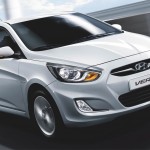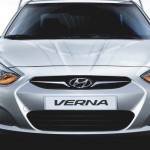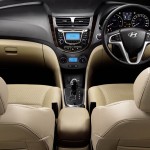The affordably priced 2011 Hyundai Sonata features details that many would expect only in much more expensive sedans.
While most car companies were being hammered in 2009, Hyundai sold more than 100,000 vehicles – one of only six companies to reach that mark – and managed to increase its market share from 4.9 to 7.1 per cent.
Sales executives would sell their grandmothers for a tenth of a point of share; to grab 2.2 points, an increase of more than 40 per cent – well, lighting candles at Lourdes is not out of the question.
It was partly good luck (the economic crisis tends to favour carmakers who build low-cost high-value products) and partly good management (Hyundai happened to have the new compact Elantra sedan and Touring crossover entering hot market segments just as the poop hit the financial fan, bolstered by the publicity generated by its Genesis luxury sedan winning both the Canadian and North American Car of the Year awards).
Last month continued that roll, with Hyundai's sales up more than 30 per cent compared to January 2009, putting it sixth overall, just behind Honda whose sales dropped 15 per cent.
The car market is a tough master, never mind Hyundai's bosses. Next month, both will ask, "What have you done for me lately?''
Two parts of that answer are the new Tucson compact crossover launched late last year, and the new Sonata "mid-size'' sedan, which is arriving in showrooms as you read this. Prices start at $22,649.
Though the U.S. Environmental Protection Agency says the new Sonata qualifies for "large car'' status because of its total interior room (passengers plus cargo), it will compete against the usual suspects in the mid-size segment, notably (by Hyundai's reckoning) Toyota Camry, Honda Accord, Nissan Altima, Chevrolet Malibu and Ford Fusion. Hyundai doesn't mention Mazda6 or Subaru Legacy, but they are players here, too.
Hyundai has been trying for some time to become "aspirational" – to make cars people WANT to buy, not just HAVE to buy.
Sure, the company wants to maintain its value story: low price, easy on fuel, lots of features, excellent warranty. But it is seeking more emotional commitment from its owners, stressing things like class-leading J. D. Power Initial Quality ratings, technological leadership in fuel-efficiency and more modern, more attractive styling.
Perhaps the best indication of success here is that the Automotive Lease Guide, one of the most important determiners of residual value for lease calculations, believes the new Sonata will be worth 53 per cent of its new-car price at the end of a 36-month lease. That compares well to Accord's class-leading 55 per cent, and very well to Altima's 53, Fusion and Camry's 49 and Malibu's 46.
Why is Automotive Lease Guide so keen on the new Sonata?
First, it looks good. Hyundai makes a lot of noise about "fluidic sculpture" being the inspiration and design theme for their new cars. Uh-huh.Whatever – it does look modern, sleek and stylish, both outside and in.
At a time when most cars in this class are skimping on interior finish and materials, Hyundai has upped the ante in Sonata, creating quite a luxurious and well-appointed cabin.
Lots of standard kit as well, among the most praise-worthy items being active front seat headrests to reduce whiplash.
Heated seats front and rear are standard or available in all but the most base trim level.
Six airbags and a stronger, stiffer structure also give Sonata "good'' ratings for all four collision types by the Insurance Institute for Highway Safety.
Sonata also checks my other big safety box, making Electronic Stability Control standard across the board. Likewise ABS brakes, Electronic Brake Force Distribution, Emergency Brake Assist, Cornering Brake Control and Traction Control. Bluetooth connectivity is another standard feature.
Mechanically, Hyundai is making a fairly brave bet by offering only a four-cylinder engine in the new Sonata. It is a very good four-cylinder, the company's Theta II GDI 2.4 litre with direct fuel injection, variable valve timing on both intake and exhaust camshafts, and a variable air intake system to boost mid-range torque.
The primary numbers – 198 horsepower and 184 lb.-ft. of torque – handily outpace the four-cylinder competition, and Sonata's power-to-weight ratio, the prime determinant in acceleration performance, leads the class too.
Despite the extra go, Sonata's fuel use is more than competitive too, due at least in part to six-speed transmissions across the board.
Hyundai figures that V6 penetration in this segment runs at less than 10 per cent (except apparently for Accord), and that the powerful four is up to the task for most customers.
The hills east of San Diego offer loads of interesting roads to evaluate a car.
The initial impression inside the Sonata is that it costs more than it does. I found the seats comfortable and supporting, although the non-height-adjustable front passenger seat seems awfully low in the car.
The rear seat is spacious too, the steep roofline not unduly compromising headroom.
On cold fire-up, you will likely notice a slight engine rattle, almost diesel-like. For good reason: direct injection, also featured on diesels, tends to be noisier.
Once warmed up and running at typical driving speeds, the four is reasonably civilized. It does get louder as revs rise, and a four will seldom deliver the smoothness of a six. But you'll hardly ever feel under-gunned, and you are going to enjoy that fuel economy.
The Hyundai-designed and -built automatic works well. A manual six-speed is offered only on the base GL trim level, and none were available for us to try.
The suspension gives the new Sonata a solid feel on the road. It is probably not the softest riding car in the field, but without the benefit of back-to-back comparisons, I'd venture to say Sonata gets the ride-handling balance as good as any, and better than most.
At first blush, it is tempting to say that the new Sonata runs at the very head of this very competitive pack.
At the very least, if you're in the market for a sedan in this class, you will have to park any prejudices you may have developed towards Korean cars and put the new Sonata on your shopping list.



























